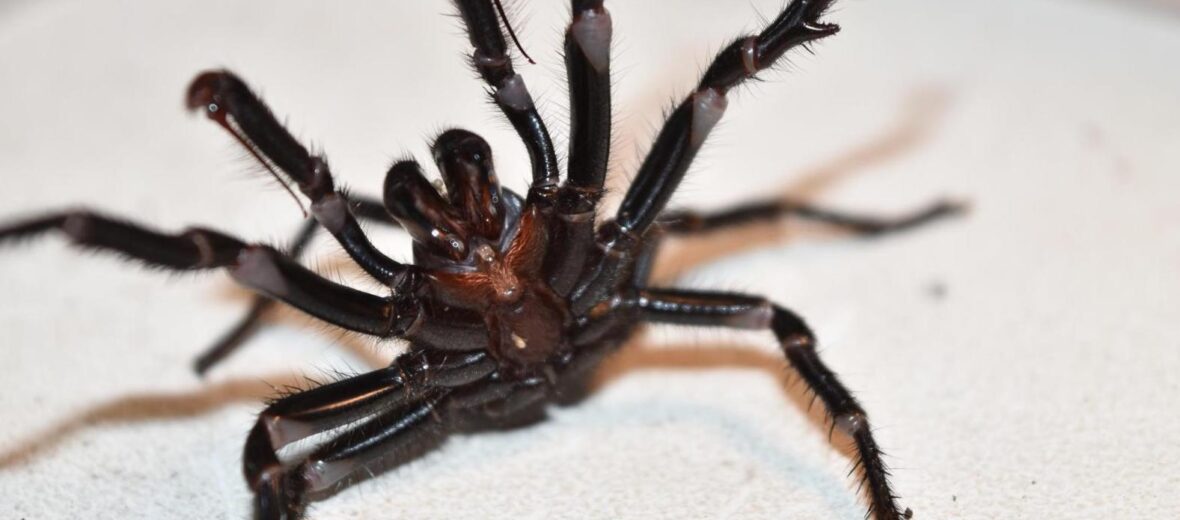
Tied for number 1 on the world’s most venomous spider list, it’s the deadly funnel-web spider! The funnel-web spider has also earned a reputation of being one of the most defensive spiders around. So, they not only look fierce… they are fierce! There are around 30 known species of funnel-web spiders; many of which are capable of delivering a very painful and potentially lethal bite. They, like most all spiders, are sexually dimorphic (females are much larger than the males).
First the Stats…
Scientific name: Atrax robustus
Length: Up to 1.4 inches, plus a 4+ inch legspan
Lifespan: Up to 8+ years
Now on to the Facts!
1.) From 1927 – 1981, there have been 13 recorded deaths due to the male funnel-web spider. Fortunately, antivenom was finally created in 1981.
2.) Envenomation affects include: breathing and circulatory issues, tears, drooling, muscle spasms, diarrhea, and vomiting. All or some of these happen within 10 – 30 minutes after being bitten.
3.) 1 in 6 bites are serious! If you get bitten by the funnel-web spider, you should seek help immediately. The venom is fast-acting and potentially lethal if not treated within a matter of hours.
4.) They can be found in Sydney, extending north to the central coast and south to the Illawarra region, and also west to the Blue Mountains in New South Wales.
5.) Male funnel-web spiders typically live alone. Females have been found to live in colonies of up to and over 100 spiders!
But wait, there’s more on the funnel-web spider!
6.) They should not ever be handled without taking substantial precautions, due to the fact that their fangs have been known to penetrate soft shoes and even fingernails!
7.) Their prey consists of insects, small reptiles, and amphibians.
Did you know…?
Their fangs make up 1/4 of their body length!
8.) Funnel web spiders live in burrows in the ground, or in stumps, tree trunks, and ferns. Their burrows are lined with white silk and several strong strands of silk extending from the entrance.
9.) The cocktail of toxins delivered are called atracotoxins (ACTX).
10.) About 10% – 25% of their bites are venomous. They produce “dry” bites (bites without delivering much, if any venom) less frequently than other spiders.
11.) 7 of the deaths caused by the funnel-web spider were children!
Now a Short Funnel-web Spider Video!
Also, check out the Critter Science YouTube channel. Videos added frequently!
Want to suggest a critter for me to write about? Let me know here.



